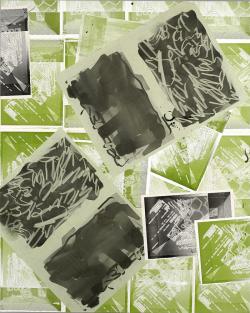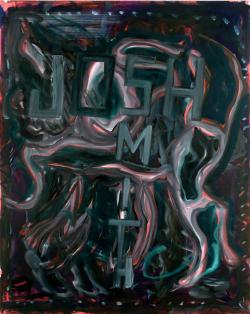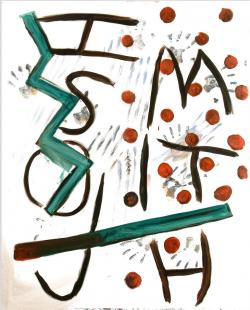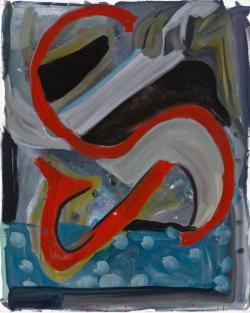

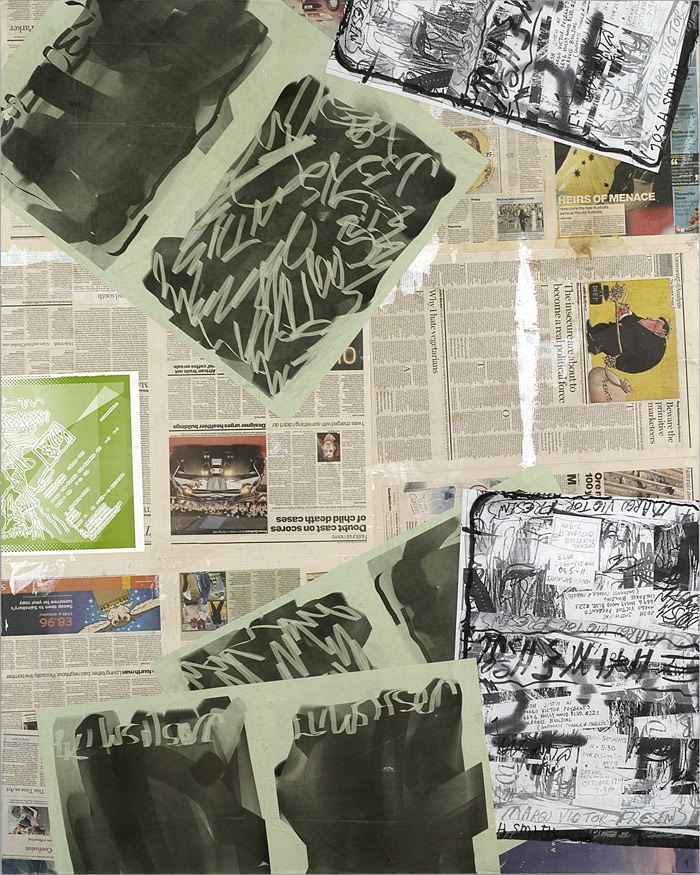
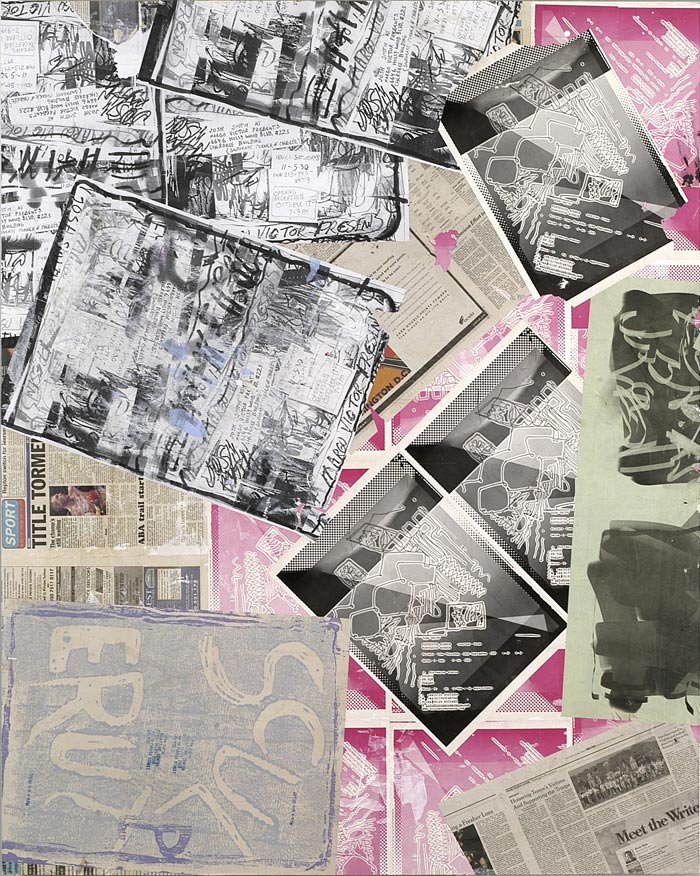
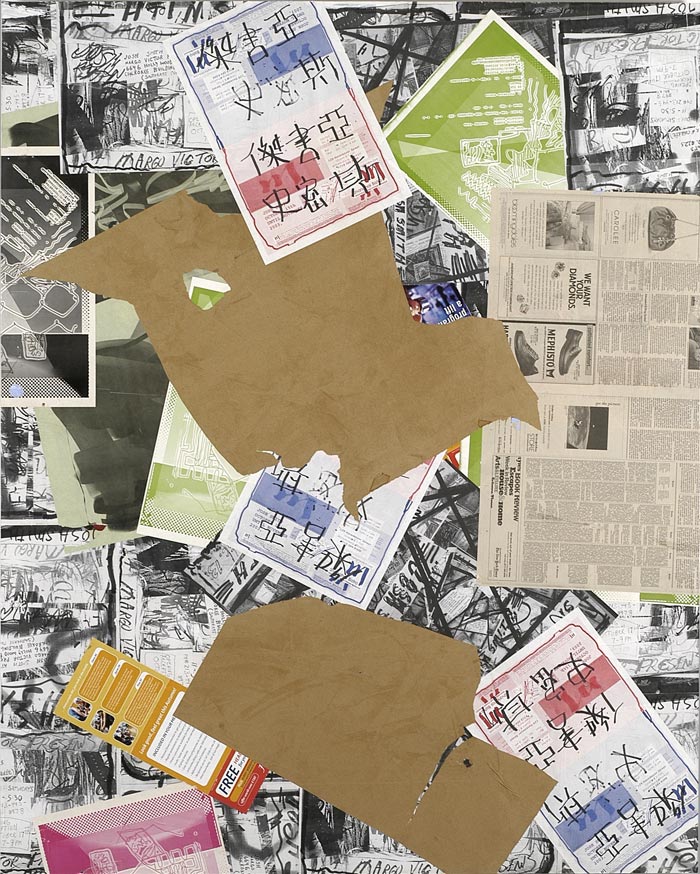




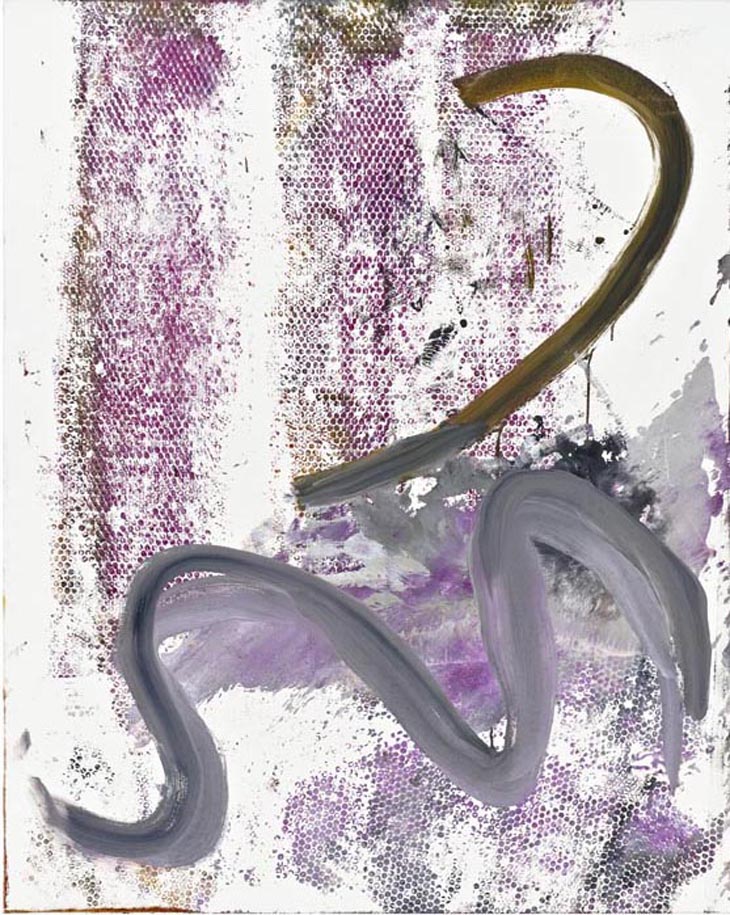
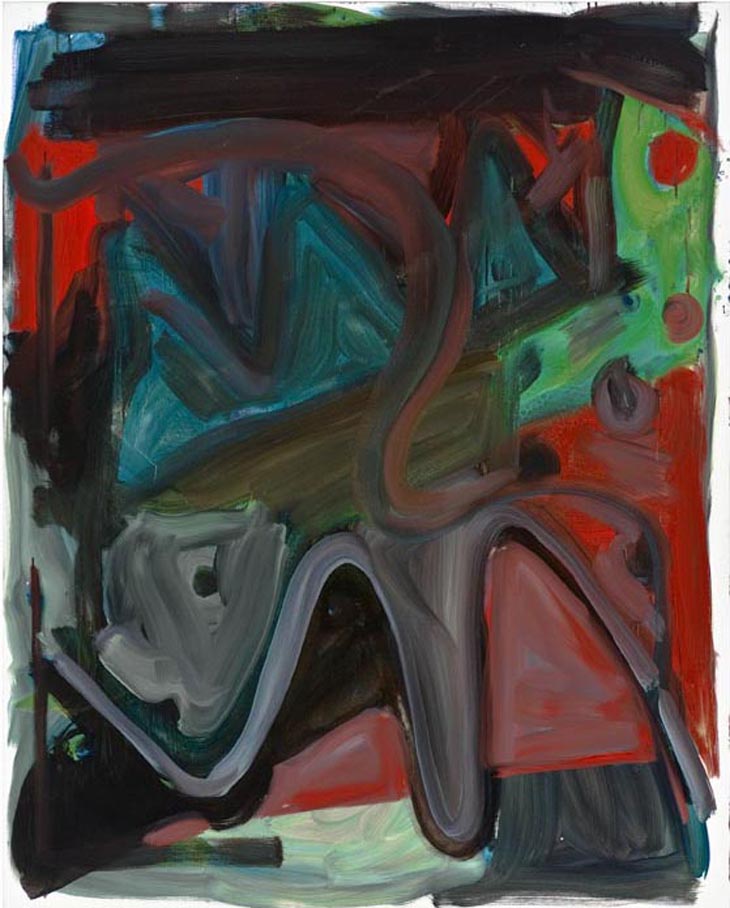
Josh Smith
In Untitled, Smith collages together newspapers, drawings, and posters to create a readymade abstraction. Smith is best known for his paintings in which he uses the letters of his own name in various configurations as a subject matter. Through Untitled’s process of assemblage, his stockpiled typefaces are used with similar effect. Loosing their function as information, words, scribbles, and symbols merge as a cacophony of prefab mark-making. In presenting a barrage of appropriated expression, Smith questions the hierarchical structures by which meaning is created.
Josh Smith’s works explore ideas of authorship and originality. In Untitled, Smith interrupts his collaged backdrop of photocopies and printed matter with hand-painted elements, both elevating the aura of mechanized copy and demoting the autonomy of the artist’s gesture. Smith’s practice is highly idiosyncratic: generating a prolific output of work, his processes and aesthetic engage with repetition as a philosophical concept. Drawing reference to Andy Warhol’s mass production, Hanne Darboven’s obsessive archives, and Robert Rauschenberg’s combines, Smith approaches replication, aggregation, and appropriation as an artistic sublime.
Josh Smith’s Untitled uses assemblage as a means to engage with painting. Layering found papers and photocopied drawings, Smith pastiches together a composition reminiscent of the Cubists’ fractured planes. Wittily subverting Picasso and Braque’s innovation of collage as a tool to confront and disrupt the illusionary quality of the painted surface, Smith uses the technique as a paint substitute. Shape, colour, texture, and form are delineated by planar surfaces, each garnered from mass produced sources. In Smith’s abstraction he removes idea of personal expression, replacing painting’s psychological depth with a reprographic generic.
Endlessly replicated both by hand and by mechanised copy, the vacant and generic quality of Josh Smith’s work gains momentum as a collection of empty signifiers. Made from recycled and plebian materials, and painted with an impoverished aesthetic, Smith frames artistic legacy with an air of inadequacy and humility. In Untitled, Smith pastes green and black posters and photocopies together as an abstracted colour-field. Complemented in places by haphazard dabs of paint, the textures of the printed matter are juxtaposed against evidence of the artist’s hand, creating a tension between facsimile and innovation.
Using the letters of his own name as a motif template, Josh Smith’s paintings eschew subject matter for a barrage of ironic and shameless autographs. Through this unorthodox approach, Smith deprives his canvases of both representational and abstract tradition to directly confront the function of painting itself. Working on stretched fabric or board often collaged with photocopies and posters, Smith questions concepts of authenticity, critical hierarchy, and the mythology of the artist.
Addressing painting through a variety of historical references – from Expressionism to Pop art – Josh Smith subverts the aura of the object through his casual aesthetics. In Untitled, Smith engages with materiality and formalism as a means to supersede visual expectation, infusing his canvas with a sense of experimentation and play. Combining the spontaneous brushwork of his abstracted signature with imprints of his own hand, Smith underscores the authenticity of artistic gesture. Bringing to mind the self-mythologising work of Martin Kippenberger and Albert Oehlen, his canvases don’t strive to appeal visually, but rather to suggest new ways in which the role of the artist can function and painting can have contemporary meaning.





